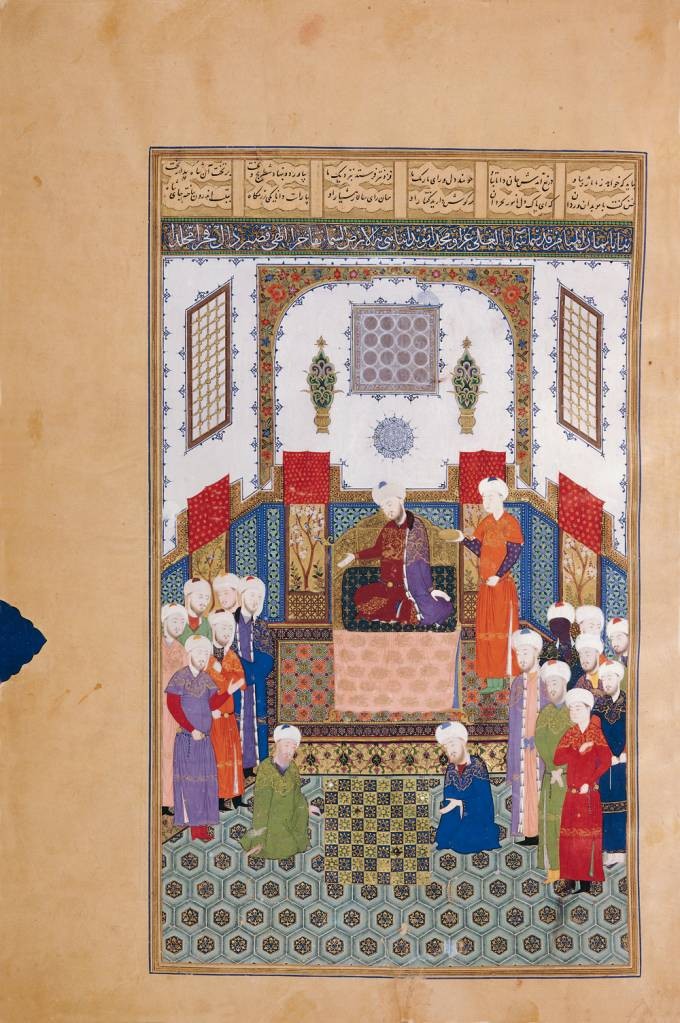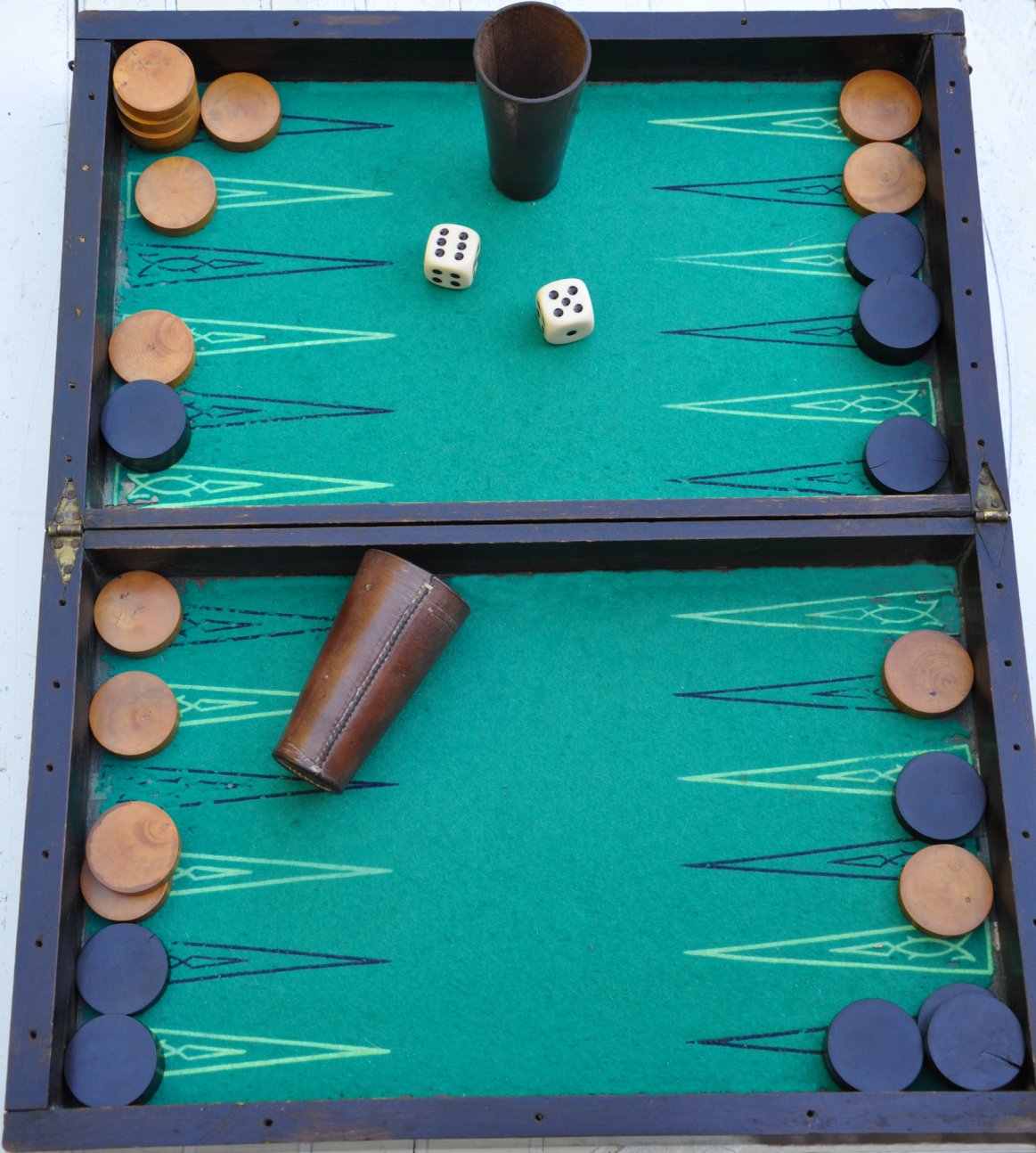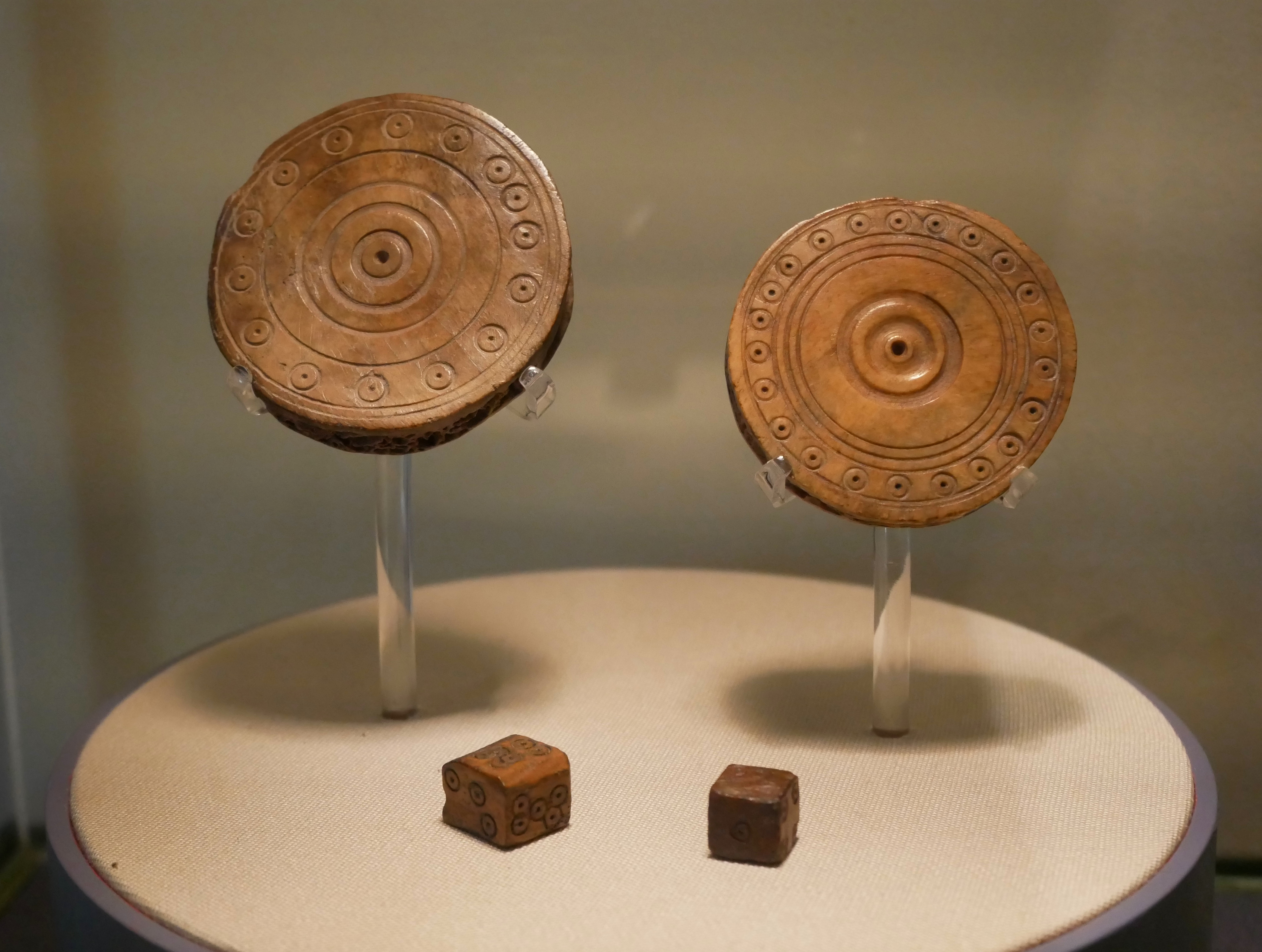|
Nard (game)
Nard ( fa, نرد, also narde or nardshir; from pal, nywʾlthšyl ''nēw-ardaxšīr'') is an historical Persian tables game for two players that is sometimes considered ancestral to backgammon. It is still played today, albeit in a different form. As in other tables games, the playing pieces are moved around a board according to rolls of dice. It uses a standard tables board, but has a different opening layout and rules of play from that of backgammon. History The game has been historically popular in Persia, Muslim countries, and among Babylonian Jews. A common legend associates the game with the founder of the Sassanian Dynasty, Ardashir. Indeed, the Persian name is a shortening of the older name , from Middle Persian ''nēw-ardaxšīr'' "brave Ardashir". The oldest known reference to the game is thought to be a passage in the Talmud, although some claim it refers to the Greek game Kubeia. Another early reference is to be found in the Middle Persian romance ''Chatrang- ... [...More Info...] [...Related Items...] OR: [Wikipedia] [Google] [Baidu] |
Bozorgmehr
Bozorgmehr-e Bokhtagan (Middle Persian: ''Wuzurgmihr ī Bōkhtagān''), also known as Burzmihr, Dadmihr and Dadburzmihr, was an Iranian sage and dignitary from the Karen family, who served as minister ('' wuzurg framadār'') of the Sasanian king (shah) Kavad I (), and the latter's son and successor Khosrow I (). He also served as the military commander (''spahbed'') of Khwarasan under Khosrow I and his successor Hormizd IV (). According to Persian and Arabic sources, Bozorgmehr was a man of "exceptional wisdom and sage counsels" and later became a characterisation of the expression. His name appears in several important works in Persian literature, most notably in the Shahnameh ("The Book of Kings"). The historian Arthur Christensen has suggested that Bozorgmehr was the same person as Borzuya, but historiographical studies of post-Sasanian Persian literature, as well as linguistic analysis show otherwise. However, the word "Borzuya" can sometimes be considered a shortened form of ... [...More Info...] [...Related Items...] OR: [Wikipedia] [Google] [Baidu] |
Georgia (country)
Georgia (, ; ) is a transcontinental country at the intersection of Eastern Europe and Western Asia. It is part of the Caucasus region, bounded by the Black Sea to the west, by Russia to the north and northeast, by Turkey to the southwest, by Armenia to the south, and by Azerbaijan to the southeast. The country covers an area of , and has a population of 3.7 million people. Tbilisi is its capital as well as its largest city, home to roughly a third of the Georgian population. During the classical era, several independent kingdoms became established in what is now Georgia, such as Colchis and Iberia. In the early 4th century, ethnic Georgians officially adopted Christianity, which contributed to the spiritual and political unification of the early Georgian states. In the Middle Ages, the unified Kingdom of Georgia emerged and reached its Golden Age during the reign of King David IV and Queen Tamar in the 12th and early 13th centuries. Thereafter, the kingdom decl ... [...More Info...] [...Related Items...] OR: [Wikipedia] [Google] [Baidu] |
Hit (tables Game)
The following is a glossary of terms used in tables games, essentially games played on a Backgammon-type board. Terms in this glossary should not be game-specific (e.g. specific to a single game like Backgammon or Acey-deucey), but applicable to a range of tables games. A ; ace # A die roll of one. # The face of a die with one pip. (Historically, 2=''deuce'', 3=''trey'', 4=''quater'', 5=''cinc'', 6=''sice''; though these terms are now obsolete.Murray (1941), p. 59.Parlett (2018), p. 28.) ; ace point : The player's first point on the board. Also home point or one point. B ; bar : The central strip separating the left and right halves of the board, usually formed by the raised edges or rails of each half board. The raised partition of the board.Longacre (1980), pp. 129 ff. ; bear off : To remove one's men from the board in the final stages of a game. The first to do so usually wins the game; however, in Trictrac, it scores points but the game continues. Also throw of ... [...More Info...] [...Related Items...] OR: [Wikipedia] [Google] [Baidu] |
Bearing Off
The following is a glossary of terms used in tables games, essentially games played on a Backgammon-type board. Terms in this glossary should not be game-specific (e.g. specific to a single game like Backgammon or Acey-deucey), but applicable to a range of tables games. A ; ace # A die roll of one. # The face of a die with one pip. (Historically, 2=''deuce'', 3=''trey'', 4=''quater'', 5=''cinc'', 6=''sice''; though these terms are now obsolete.Murray (1941), p. 59.Parlett (2018), p. 28.) ; ace point : The player's first point on the board. Also home point or one point. B ; bar : The central strip separating the left and right halves of the board, usually formed by the raised edges or rails of each half board. The raised partition of the board.Longacre (1980), pp. 129 ff. ; bear off : To remove one's men from the board in the final stages of a game. The first to do so usually wins the game; however, in Trictrac, it scores points but the game continues. Also throw of ... [...More Info...] [...Related Items...] OR: [Wikipedia] [Google] [Baidu] |
Closed (tables Game)
The following is a glossary of terms used in tables games, essentially games played on a Backgammon-type board. Terms in this glossary should not be game-specific (e.g. specific to a single game like Backgammon or Acey-deucey), but applicable to a range of tables games. A ; ace # A die roll of one. # The face of a die with one pip. (Historically, 2=''deuce'', 3=''trey'', 4=''quater'', 5=''cinc'', 6=''sice''; though these terms are now obsolete.Murray (1941), p. 59.Parlett (2018), p. 28.) ; ace point : The player's first point on the board. Also home point or one point. B ; bar : The central strip separating the left and right halves of the board, usually formed by the raised edges or rails of each half board. The raised partition of the board.Longacre (1980), pp. 129 ff. ; bear off : To remove one's men from the board in the final stages of a game. The first to do so usually wins the game; however, in Trictrac, it scores points but the game continues. Also th ... [...More Info...] [...Related Items...] OR: [Wikipedia] [Google] [Baidu] |
Open (tables Game)
The following is a glossary of terms used in tables games, essentially games played on a Backgammon-type board. Terms in this glossary should not be game-specific (e.g. specific to a single game like Backgammon or Acey-deucey), but applicable to a range of tables games. A ; ace # A die roll of one. # The face of a die with one pip. (Historically, 2=''deuce'', 3=''trey'', 4=''quater'', 5=''cinc'', 6=''sice''; though these terms are now obsolete.Murray (1941), p. 59.Parlett (2018), p. 28.) ; ace point : The player's first point on the board. Also home point or one point. B ; bar : The central strip separating the left and right halves of the board, usually formed by the raised edges or rails of each half board. The raised partition of the board.Longacre (1980), pp. 129 ff. ; bear off : To remove one's men from the board in the final stages of a game. The first to do so usually wins the game; however, in Trictrac, it scores points but the game continues. Also th ... [...More Info...] [...Related Items...] OR: [Wikipedia] [Google] [Baidu] |
Men (tables)
The following is a glossary of terms used in tables games, essentially games played on a Backgammon-type board. Terms in this glossary should not be game-specific (e.g. specific to a single game like Backgammon or Acey-deucey), but applicable to a range of tables games. A ; ace # A die roll of one. # The face of a die with one pip. (Historically, 2=''deuce'', 3=''trey'', 4=''quater'', 5=''cinc'', 6=''sice''; though these terms are now obsolete.Murray (1941), p. 59.Parlett (2018), p. 28.) ; ace point : The player's first point on the board. Also home point or one point. B ; bar : The central strip separating the left and right halves of the board, usually formed by the raised edges or rails of each half board. The raised partition of the board.Longacre (1980), pp. 129 ff. ; bear off : To remove one's men from the board in the final stages of a game. The first to do so usually wins the game; however, in Trictrac, it scores points but the game continues. Also throw of ... [...More Info...] [...Related Items...] OR: [Wikipedia] [Google] [Baidu] |
Piece (tables)
The following is a glossary of terms used in tables games, essentially games played on a Backgammon-type board. Terms in this glossary should not be game-specific (e.g. specific to a single game like Backgammon or Acey-deucey), but applicable to a range of tables games. A ; ace # A die roll of one. # The face of a die with one pip. (Historically, 2=''deuce'', 3=''trey'', 4=''quater'', 5=''cinc'', 6=''sice''; though these terms are now obsolete.Murray (1941), p. 59.Parlett (2018), p. 28.) ; ace point : The player's first point on the board. Also home point or one point. B ; bar : The central strip separating the left and right halves of the board, usually formed by the raised edges or rails of each half board. The raised partition of the board.Longacre (1980), pp. 129 ff. ; bear off : To remove one's men from the board in the final stages of a game. The first to do so usually wins the game; however, in Trictrac, it scores points but the game continues. Also throw of ... [...More Info...] [...Related Items...] OR: [Wikipedia] [Google] [Baidu] |
Space (tables)
The following is a glossary of terms used in tables games, essentially games played on a Backgammon-type board. Terms in this glossary should not be game-specific (e.g. specific to a single game like Backgammon or Acey-deucey), but applicable to a range of tables games. A ; ace # A die roll of one. # The face of a die with one pip. (Historically, 2=''deuce'', 3=''trey'', 4=''quater'', 5=''cinc'', 6=''sice''; though these terms are now obsolete.Murray (1941), p. 59.Parlett (2018), p. 28.) ; ace point : The player's first point on the board. Also home point or one point. B ; bar : The central strip separating the left and right halves of the board, usually formed by the raised edges or rails of each half board. The raised partition of the board.Longacre (1980), pp. 129 ff. ; bear off : To remove one's men from the board in the final stages of a game. The first to do so usually wins the game; however, in Trictrac, it scores points but the game continues. Also throw of ... [...More Info...] [...Related Items...] OR: [Wikipedia] [Google] [Baidu] |
Point (tables)
The following is a glossary of terms used in tables games, essentially games played on a Backgammon-type board. Terms in this glossary should not be game-specific (e.g. specific to a single game like Backgammon or Acey-deucey), but applicable to a range of tables games. A ; ace # A die roll of one. # The face of a die with one pip. (Historically, 2=''deuce'', 3=''trey'', 4=''quater'', 5=''cinc'', 6=''sice''; though these terms are now obsolete.Murray (1941), p. 59.Parlett (2018), p. 28.) ; ace point : The player's first point on the board. Also home point or one point. B ; bar : The central strip separating the left and right halves of the board, usually formed by the raised edges or rails of each half board. The raised partition of the board.Longacre (1980), pp. 129 ff. ; bear off : To remove one's men from the board in the final stages of a game. The first to do so usually wins the game; however, in Trictrac, it scores points but the game continues. Also throw of ... [...More Info...] [...Related Items...] OR: [Wikipedia] [Google] [Baidu] |
Tables Board
Tables games are a class of board game that includes backgammon and which are played on a tables board, typically with two rows of 12 vertical markings called points. Players roll dice to determine the movement of pieces. Tables games are among the oldest known board games, and many different varieties are played throughout the world. They are called 'tables' games because the boards consist of four quadrants or 'tables'. The vast majority are race games, the tables board representing a linear race track with start and finish points, the aim being to be first to the finish line, but the characteristic features that distinguish tables games from other race games are that they are two-player games using a large number of pieces, usually fifteen per player. Tables games should not be confused with table games which are casino gambling games like roulette or blackjack. Name The word 'tables' is derived from the Latin ''tabula'' which primarily meant 'board' or 'plank', but also ... [...More Info...] [...Related Items...] OR: [Wikipedia] [Google] [Baidu] |
_-_opening_layout.png)




